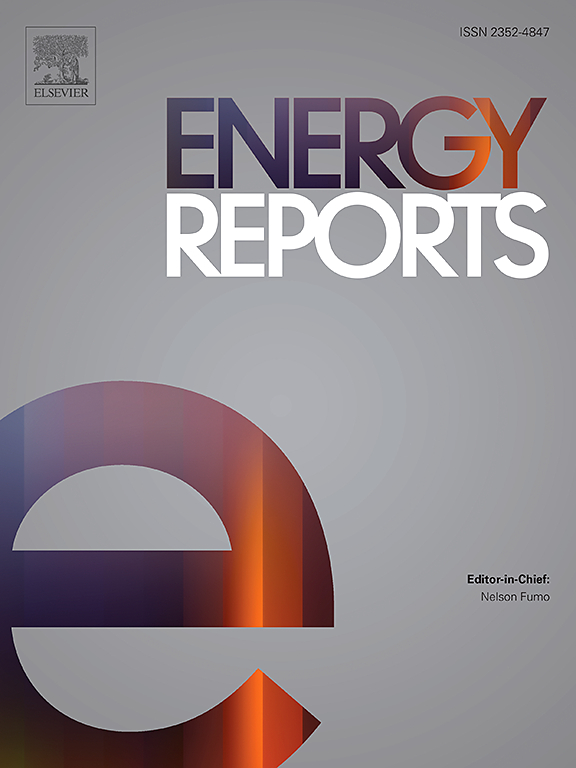mgcl2 -硅胶混合物作为可持续的液体干燥剂用于湿度控制
IF 5.1
3区 工程技术
Q2 ENERGY & FUELS
引用次数: 0
摘要
尽管对高效除湿系统的需求不断增长,但有限的研究探索了氯化镁(MgCl2)与硅胶结合作为复合液体干燥剂的潜力。本研究的主要目的是系统地调查和量化在不同操作条件下将硅胶(重量为10 %和20 %)加入MgCl2溶液中所实现的除湿性能增强。具体而言,本工作旨在:(1)与纯MgCl2相比,评估MgCl2-硅胶复合材料的吸湿性能和吸湿能力;(2)确定最佳操作参数,包括风速(5-7 m/s)和干燥剂流量(1 - 3 LPM);(3)建立硅胶浓度与除湿效率的关系。本研究的关键贡献是开发了一种新型mgcl2 -硅胶复合液体干燥剂,并对其性能进行了表征,该干燥剂具有显著增强的除湿能力。实验结果表明,在2 LPM流速下,MgCl2+ 20 %硅胶的除湿率最高(ΔW=0.00196 kg/kg),比纯MgCl2有很大提高。在最佳空气流速(7 m/s)下,复合干燥剂的除湿率为0.00110 kg/s,比纯MgCl2提高了22 %。在5 m/s时,除湿效率为35 %,在7 m/s时,除湿效率为41.5 %,在最大风速下,20% %的硅胶复合材料的除湿效率比纯MgCl2高出22 %。对于干燥剂流量,峰值效率为67 %,达到2 LPM。这项研究对该领域做出了重大贡献,证明了硅胶掺入产生了协同效应,硅胶的高表面积和孔隙率补充了MgCl2的吸湿特性,从而在更大的湿度范围内增强了吸湿性。研究结果为开发更可持续和节能的空调液体干燥剂系统提供了基础,解决了环境和经济可持续发展的目标。本文章由计算机程序翻译,如有差异,请以英文原文为准。
MgCl2-silica gel mixture as a sustainable liquid desiccant for humidity control
Despite the growing demand for efficient dehumidification systems, limited research has explored the potential of magnesium chloride (MgCl2) combined with silica gel as a composite liquid desiccant. The primary objective of this study is to systematically investigate and quantify the dehumidification performance enhancement achieved by incorporating silica gel (10 % and 20 % by weight) into MgCl2 solution under varying operational conditions. Specifically, this work aims to: (1) evaluate the hygroscopic properties and moisture absorption capacity of MgCl2-silica gel composits compared to pure MgCl2, (2) determine the optimal operating parameters including air velocity (5–7 m/s) and desiccant flow rates (1–3 LPM), and (3) establish relationship between silica gel concentarion and dehumidification efficinency.
The key contribution of this research is the development and performance characterization of a novel MgCl2-silica gel composite liquid desiccant that demonstrates significantly enhanced moisture removal capabilities. Experimental results reveal that MgCl2+ 20 % silica gel achieves the highest moisture removal (ΔW=0.00196 kg/kg) at 2 LPM flow rate, representing a substantial improvement over pure MgCl2. At optimal air velocity (7 m/s), the composite desiccant achieves a moisture removal rate of 0.00110 kg/s, a 22 % enhancement over pure MgCl2. The dehumidification efficiency ranges from 35 % at 5 m/s to 41.5 % at 7 m/s, with the 20 % silica gel composite showing 22 % higher efficiency than pure MgCl2 at maximum air velocity. For desiccant flow rates, peak efficiency of 67 % is achieved at 2 LPM.
This study makes a significant contribution to the field by demonstrating that silica gel incorporation creates a synergistic effect, where the high surface area and porosity of silica gel complement the hygroscopic properties of MgCl2, resulting in enhanced moisture absorption across broader humidity ranges. The findings provide a foundation for developing more sustainable and energy-efficient liquid desiccant systems for air conditioning applications, addressing both environmental and economic sustainability goals.
求助全文
通过发布文献求助,成功后即可免费获取论文全文。
去求助
来源期刊

Energy Reports
Energy-General Energy
CiteScore
8.20
自引率
13.50%
发文量
2608
审稿时长
38 days
期刊介绍:
Energy Reports is a new online multidisciplinary open access journal which focuses on publishing new research in the area of Energy with a rapid review and publication time. Energy Reports will be open to direct submissions and also to submissions from other Elsevier Energy journals, whose Editors have determined that Energy Reports would be a better fit.
 求助内容:
求助内容: 应助结果提醒方式:
应助结果提醒方式:


